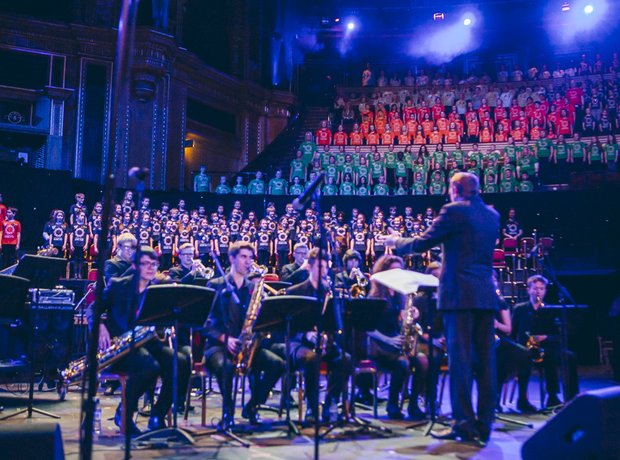


Since the opera is set in Japan, it seems highly appropriate to borrow some elements of Noh theater. In particular, the design of Pinkerton’s “house” is clearly influenced by the traditional Noh theatre. It is mounted on a circular platform which can be and is rotated slowly to show the house and garden from all angles. The rotation is apparently done by six KÅken (後見) (stage hands) wearing masks and black robes who openly attach one end of a strap to the platform and very slowly rotate the stage either clockwise or counter-clockwise. It was entirely appropriate that they were the first group on stage after Butterfly’s initial curtain call where they doffed their masks and took a bow.

Mercifully there is no curtain. The lights dim slowly as the orchestra plays its last few tragic notes and Maestro Nicolo Luisotti lowers his hands. An instant of stunned silence, then an outburst of enthusiastic applause. I have just seen my best-ever performance of Madama Butterfly. There are many operas in which the heroine suffers a mortal wound but goes improbably on to sing one more aria before finally keeling over dead. Not this one. She has already sung her last aria. She wavers there on her knees and drops the knife. She opens her mouth, but no sound emerges. She wavers more as we hear Pinkerton rushing into the house. Finally she topples over dead at the feet of Pinkerton as he flings back the screen.  And Suzuki rushes in with Sorrow. Butterfly quickly hides the knife, desperately embraces Sorrow, and tells him, “May you never know the sacrifice I am making for your sake.” Suzuki and Sorrow leave the room, closing the screen. In what seemed to me an appropriate and poignant touch, Suzuki prostrates herself before her own gods, thus acknowledging that she knew what Cio-Cio-San was about to do and that there was no alternative. Meanwhile, in her room, Butterfly wasted no time in again raising the knife above her and then plunging it into her chest. She reads aloud the words inscribed on it: “It is better to die with honor than to live without it.” She grips it with both hands and raises it above her head.Â. Cio-Cio-San reads the inscription on the Hari-Kari knife


 0 kommentar(er)
0 kommentar(er)
